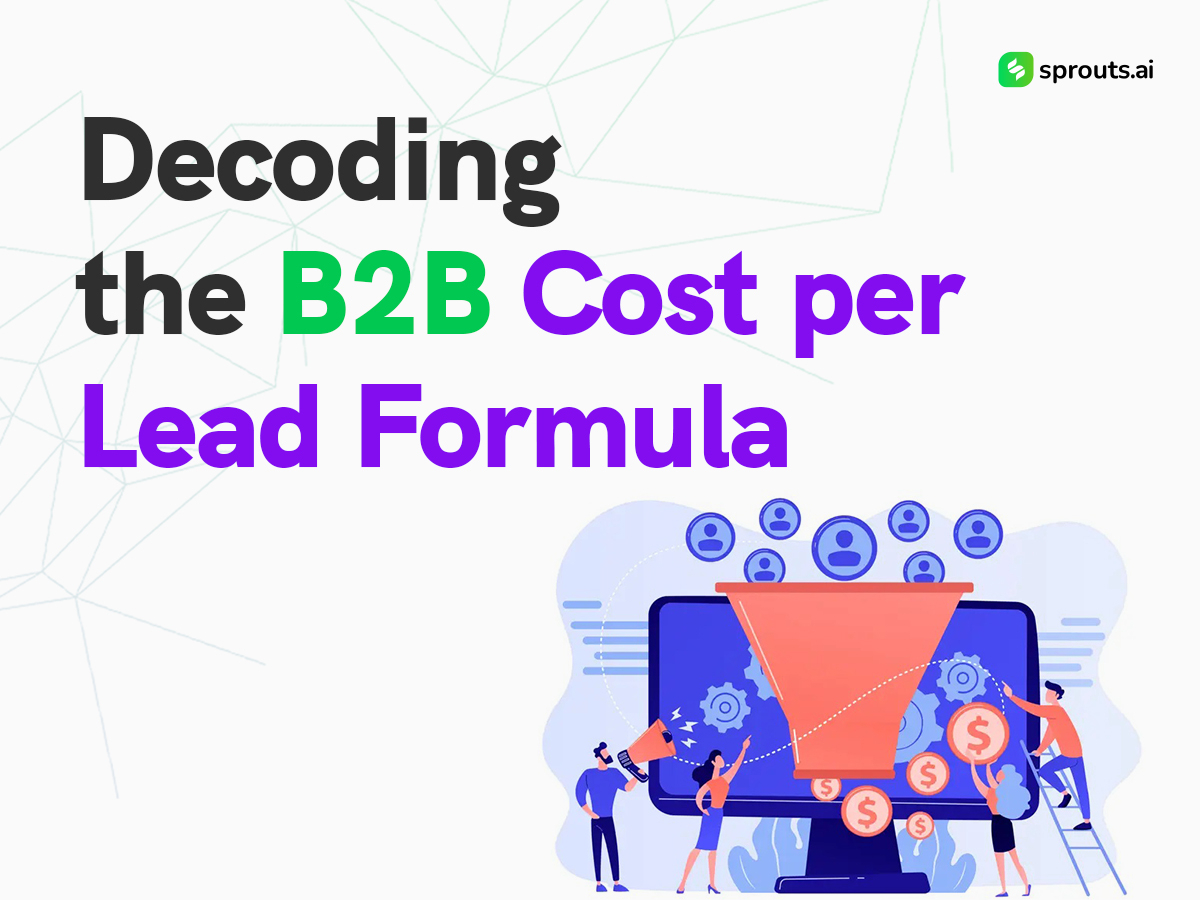Understanding the cost-per-lead B2B formula is akin to uncovering a secret code key to optimizing your marketing efforts. This seemingly simple metric conceals a wealth of insights that can dramatically impact your marketing budget and overall strategy. In this blog, we’ll discuss the intricacies of the B2B cost-per-lead formula and explore its fascinating relationship with your marketing budget.
The Building Blocks of CPL: Defining the Formula
At its core, the B2B cost per lead formula is a straightforward equation: Total Marketing Costs / Total Number of Leads Generated. While the formula itself is simple, the insights it provides are far-reaching. Let’s break down its components:
Total Marketing Costs: This includes all expenses related to your marketing efforts – from advertising and content creation to events and software tools. It’s essential to track every dollar invested in your marketing endeavors accurately.
Total Number of Leads Generated: Count all the leads your marketing efforts have brought in within a specific timeframe. A lead is someone who has shown interest in your product or service by providing their contact information.
Key Insights from the CPL Metric
Now that we understand how to calculate CPL B2B let’s explore the valuable insights it offers:
1. Efficiency of Marketing Channels
CPL B2B enables you to evaluate the performance of different marketing channels. You can identify which channels deliver the most cost-effective leads by comparing the cost per lead B2B across various platforms – such as social media, email campaigns, webinars, and more. This insight empowers you to allocate your resources strategically, focusing on channels that yield higher-quality leads at a lower cost. Regularly analyze CPL B2B for each channel and adjust your strategy based on the findings.
2. Lead Quality and Conversion Rates
A lower CPL B2B doesn’t necessarily guarantee success if the leads generated don’t convert into customers. By examining the conversion rates of leads acquired through different channels, you can correlate CPL B2B with lead quality. A higher CPL B2B might be justifiable if it brings in leads more likely to convert into paying customers. Don’t solely focus on reducing CPL B2B; prioritize lead quality and conversion rates.
3. Budget Allocation and Optimization
CPL B2B acts as a compass for distributing your marketing budget effectively. Allocating resources to channels with a favorable CPL B2B can stretch your budget further, allowing you to generate more leads without inflating costs. This data-driven approach ensures that your budget is invested where it matters most. Use CPL B2B insights to reallocate the budget from underperforming channels to those delivering better results.
The Intriguing Connection: Marketing Budget and CPL
The relationship between your marketing budget and CPL B2B is not one-sided. Your marketing budget influences CPL B2B and vice versa. Here’s how:
1. Budget Flexibility and Impact on CPL
The amount you allocate to your marketing budget directly affects your CPL B2B. A larger budget allows for more extensive campaigns; broader audience reach, and potentially lower CPL B2B. However, this relationship isn’t linear. Overspending on inefficient strategies can inflate your CPL B2B, eroding the benefits of a higher budget. Maintain a balance between budget allocation and efficient spending to keep CPL B2B in check.
2. CPL’s Role in Budget Decision-Making
CPL B2B data can influence your budget decisions. Suppose you discover that a particular channel has consistently low CPL B2B and high-quality leads. In that case, you might consider reallocating resources from less effective channels to capitalize on the CPL B2B advantage. This dynamic decision-making process ensures that your budget aligns with the most cost-effective lead-generation avenues. Regularly review CPL B2B data to optimize budget distribution and maximize results.
Thoughts to Ponder: Beyond the Numbers
As you join the journey of learning and implementing the B2B cost-per-lead formula,, it’s important to remember that success isn’t solely measured in numbers. Thought-provoking questions arise as you navigate this landscape:
Are Low-Cost Leads Always the Best? : While reducing CPL B2B is a goal, assessing lead quality and conversion potential is essential. A higher-cost lead that converts into a high-value customer might be more valuable than several low-cost leads.
Long-Term vs. Short-Term Strategies: Focusing solely on immediate cost reduction might hinder long-term growth. A well-considered balance between short-term CPL B2B goals and long-term customer relationship-building is crucial.
Innovation and Experimentation: While CPL B2B is a guiding metric, don’t shy away from innovative strategies that might initially have a higher CPL B2B. Experimentation can lead to breakthroughs that transform your business.
The cost per lead formula is more than a mere calculation – it’s a treasure trove of insights that can shape the trajectory of your business. By diligently tracking CPL B2B, understanding its implications, and embracing a holistic perspective, you can harness its power to refine your marketing strategies, optimize your budget allocation, and ultimately drive the growth of your B2B venture. So, let the hidden dynamics of CPL B2B guide you toward marketing success that transcends numbers alone.

